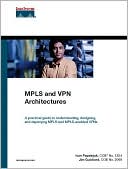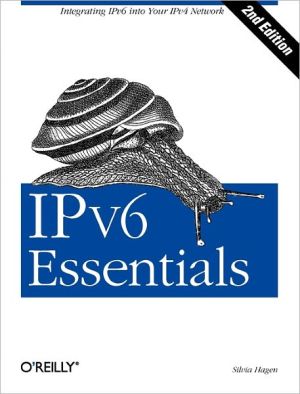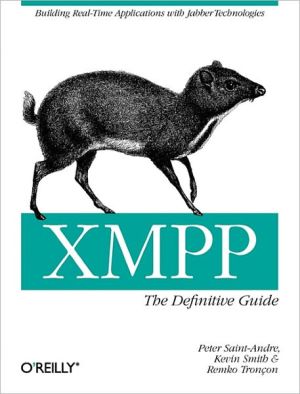MPLS and VPN Architectures
Search in google:
A practical guide to understanding, designing, and deploying MPLS and MPLS-enabled VPNsIn-depth analysis of the Multiprotocol Label Switching (MPLS) architecture Detailed discussion of the mechanisms and features that constitute the architecture Learn how MPLS scales to support tens of thousands of VPNs Extensive case studies guide you through the design and deployment of real-world MPLS/VPN networks Configuration examples and guidelines assist in configuring MPLS on Cisco® devices Design and implementation options help you build various VPN topologiesMultiprotocol Label Switching (MPLS) is an innovative technique for high-performance packet forwarding. There are many uses for this new technology, both within a service-provider environment and within the enterprise network, and the most widely deployed usage today is the enabling of Virtual Private Networks (VPNs). With the introduction of MPLS-enabled VPNs, network designers are able to better scale their networks than with the methods available in the past.Network engineers and administrators need quick, effective education on this technology to efficiently deploy MPLS-enabled VPNs within their networks. With that goal in mind, MPLS and VPN Architectures provides an in-depth discussion particular to Cisco's MPLS architecture. This book covers MPLS theory and configuration, network design issues, and case studies as well as one major MPLS application: MPLS-based VPNs. The MPLS/VPN architecture and all its mechanisms are explained with configuration examples, suggested design and deployment guidelines, and extensive case studies.MPLS and VPN Architectures is your practical guide to understanding, designing, and deploying MPLS and MPLS-based VPNs. Booknews An overview of multiprotocol label switching (MPLS) architecture and configuration, as well as MPLS based virtual private networks (VPNs). Topics include frame- and cell-mode MPLS operation, running frame-mode MPLS across switched WAN media, VPN implementation options, architecture operation, provider edge to customer edge connectivity options, advanced topologies, guidelines for MPLS/VPN deployment, and an IP tunneling to MPLS/VPN migration case study. Annotation c. Book News, Inc., Portland, OR (booknews.com)
IntroductionPt. IMPLS Technology and Configuration3Ch. 1Multiprotocol Label Switching (MPLS) Architecture Overview5Ch. 2Frame-mode MPLS Operation23Ch. 3Cell-mode MPLS Operation49Ch. 4Running Frame-mode MPLS Across Switched WAN Media65Ch. 5Advanced MPLS Topics73Ch. 6MPLS Migration and Configuration Case Study97Pt. IIMPLS-based Virtual Private Networks113Ch. 7MPLS Troubleshooting115Ch. 8Virtual Private Network (VPN) Implementation Options129Ch. 9MPLS/VPN Architecture Overview161Ch. 10MPLS/VPN Architecture Operation183Ch. 11Provider Edge (PE) to Customer Edge (CE) Connectivity Options225Ch. 12Advanced MPLS/VPN Topologies255Ch. 13Advanced MPLS/VPN Topics269Ch. 14Guidelines for the Deployment of MPLS/VPN339Ch. 15Carrier's Carrier and Inter-provider VPN Solutions377Ch. 16IP Tunneling to MPLS/VPN Migration Case Study407Ch. 17MPLS VPN Troubleshooting425App. A: Answers to Review Questions443App. BTag-switching and MPLS Command Reference461Index465








